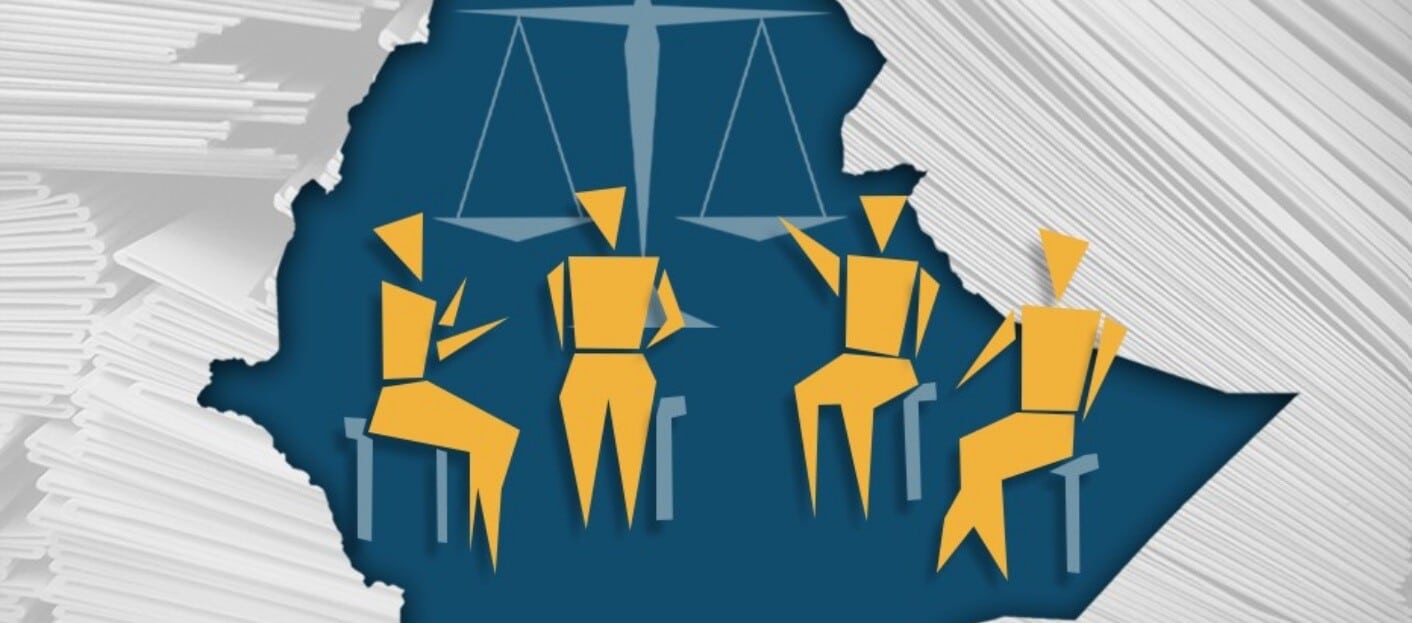(Vancouver Sun) – In parts of this vast country, fields are dry and people are without food. But it’s not like the 1980s, when hundreds of thousands died of starvation. Today, intervention efforts have led to success.
Four years ago, when hardly anyone outside this region was even noticing the serious food crisis developing in the Horn of Africa, hunger was already stalking the dry valley floor just outside the boundaries of this southern Ethiopian town.
Cattle died. Husbands left their wives and boys left their fathers to try to find work in the towns. Whole families fled to new lives of urban poverty.
Today, the climate instability underlying the ever-present threat of famine has grown worse.
Rainfall is less and less predictable, and more and more likely to come at the wrong time. In many parts of this vast country of 83 million, fields grow only thistles, which at least slow soil erosion until – maybe – enough rain comes to make it worthwhile to plant something the people and their animals will be able to eat.
Yet on the outskirts of Kutcha today, hunger – that once-frequent visitor – is just a memory.
Despite hard times all around them, eating well has never been so easy for more than 200 families descended from the peasants who were coerced or forced to resettle here 30 years ago by the Derg, Ethiopia’s hard-line Communist government of the day. What was then dense jungle, populated by dangerous predators and disease-bearing parasites, has been transformed into what is, by the standards of Ethiopia’s challenging geography, a new Eden.
What happened to turn things around so completely?
The short answer is small-scale irrigation. A longer answer, which requires some context, is that food aid has done its magic in this little corner of a country where, in any given year, up to 20 million people – more than one citizen in every four – can’t grow or buy enough to eat.
Food aid today involves much more than the old stereotype of throwing grain sacks from the back of trucks, explains Jim Cornelius, the Winnipeg-based head of the Canadian Foodgrains Bank, who led a tour of five Canadian journalists to food-challenged areas of this chronically hungry land.
The most recent food aid program in this part of southern Ethiopia may be more dramatically successful than those in most other places, but how it unfolded is typical. It started four years ago as a government-sanctioned, Foodgrains Bank-funded, locally run make-work program that exchanges food – usually big sacks of maize – for labour on community projects.
A big gang of workers – in this case, 260 of them – were identified by their neighbours as members of the most needy families in the community. They were equipped with rudimentary tools and set to work diverting some of the flow from a nearby river to 65 hectares of flat, fertile land that had never been occupied because, without irrigation, it was too dry to farm.
The result?
In an area where once people grew only nourishing but not very lucrative maize – and in the drier years not much of that – they can now experiment with tasty new cash crops as diverse as peppers, beans, onions, and more.
Soon, when recent plantings mature, they’ll also have bananas to truck to market – a big money-maker for those few who can grow them in this difficult climate.
Already, a farmer named Abera has gone from one of the poorest in his community to the envy of his neighbours: he made 1,000 birr ($60) from one crop of peppers alone.
His combined earnings from this and his other irrigated crops have bought him a team of oxen as well as good food and new clothes for his family. He had 80 birr to spare to contribute to improvements at the community’s school.
Most others who participated in the project have been just as successful – and just as generous in their support of the school, which is a priority for Ethiopian parents.
“We are tired of living on aid from others,” said another farmer, named Philemon. “We want to live on our own production.”
Things aren’t quite so rosy, though they’re by no means as bad as they might otherwise be, in other communities the Foodgrains tour visited – the mountain villages of Galewargo and Aelto Sarota, as well as Girara Ambe lower down on the plains of the Wolaita Zone.
Ethiopia’s geography and demographics – and perhaps the even more complex national and global politics that underlie food aid programs here – have prevented these places from replicating Kutcha’s degree of success, but they’ve made gains nonetheless. Settlements built high in the mountains – a favoured place for Ethiopians to live, perhaps because the weather is cooler and malaria-carrying mosquitoes cannot thrive – do not have many, or often any, irrigation opportunities. Nor do vast stretches of the plains that are located too far from a water source.
As a result, food-aid programs in these places are restricted either to less flashy work-for-food or work-for-cash public works projects, such as reclaiming eroded hillsides in Gale-wargo, or to fostering small-scale economic alternatives, like the self-help savings and lending group for women in Aelto Sarota. It’s not that these projects don’t profit the participants, but rather that the payoff is small compared with the productivity boost the lucky few in the Kutcha region have found on their newly irrigated land.
But no amount of clever programming is likely to address the biggest challenge in these communities, says Sam Vander Ende, the Canadian who heads up the Foodgrains Bank efforts in this part of Africa. It’s that so many farmers don’t have nearly enough land. All land in Ethiopia is government owned, but individuals do have a right to farm defined plots, and the right to pass it on to their children. Lots of children – so many that the size of these plots has been whittled down over the generations, and many families now are down to a quarter-hectare or, in some cases, just one-eighth.
For them, it doesn’t matter much if it rains or when or how much. There’s no new farm technology, no mix of high-value crops that will be able to give them a decent living off so little land, Vander Ende says.
The Ethiopian government, which controls food aid distribution with firm rules and which prohibits foreign NGOs and their partners from speaking out on political issues, seems to recognize this.
It has a lot of reasonably good land available in other lightly populated parts of the country – much more than enough, the government says, to give every farm family sufficient land on which to make a living. But it doesn’t have the resources to provide the supports needed for so many citizens to move right away, even though their need is great. And, thanks to complicated national and global politics that spook international donors, richer countries won’t lift a finger to help.
LEGACIES OF THE PAST
Resettlement has a terrible reputation in Ethiopia. Vander Ende and his local colleagues are required by law to avoid any public discussions that can be interpreted as political advocacy, but it’s easy for any visitor with access to Google to discover the reasons – both historical and current – why this is so.
Older Ethiopians still remember the forced resettlement in the 1970s and 1980s under the violently repressive Derg government, which was ousted by the forerunners of the cur-rent regime in a civil war. The shabby, rusting remains of their failed collective farms still litter the landscape. Published reports from the international Human Rights Watch organization and from some foreign journalists allege – and the government strongly denies – that the same kind of sad story is still playing out. The government is involved in or planning massive resettlements.
The idea is, according to the government version of the story, to consolidate pastoralist families in larger villages where they will have health care and schools close at hand. As well – and this is the point the critics seize on – this makes room on the land where these nomads used to live for huge new corporate farms in four vast and sparsely populated parts of the country: the regions known as Gambella, Afar, Somali and Benishangui-Gumuz.
With a single foreign-owned farm as large as 100,000 hectares (or 1,000 square kilo-metres), the land masses in question are huge. But so is Ethiopia. According to government statistics, 740,000 of its 1.2 million square kilometres is arable, but only 150,000 square kilometres is being cultivated.
A Human Rights Watch report from early this year said 70,000 people in the western region of Gambella were forced into resettlement and now are at risk of starvation because the government failed to provide promised services and economic alternatives in the villages that are their new homes. It quoted many harsh and bitter statements from the people who were moved, or who fled to refugee camps across the border in Kenya.
The consequence of this kind of publicity is that donor governments, Canada among them, will have nothing to do with anything that smacks of resettlement. The Foodgrains Bank tour did not include any of these controversial areas, but tour participants did get to see another, very different side of the resettlement issue.
In some of the over-crowded areas visited, especially Girara Ambe in the heart of what is called “the green famine belt,” scores of families say they want to go to new areas where they can get more land. Yet only four families from the village and its surrounding area were chosen for the latest round of resettlement because, the government says, it can’t establish the services in a new community quickly enough to accommodate any more. So most would-be migrants are left with little to do but wait for the renewal of the region’s frequent work-for-food programs, and pray for rain in the certain-to-be-vain hope that this time their tiny plots will suddenly and miraculously produce more than they ever could in even the best of years gone by.
The idea of a “green famine” is hard to get your head around, especially as you jounce down the dirt roads of this sprawling little settlement. It’s the dry sea-son – obviously the off-season for agriculture – but there’s still a lot of green in the trees that dot the landscape. The ubiquitous small fields look well-tended and ready for planting.
The humble-but-neat little huts where families live don’t even have any adjacent plots of enset – the so-called false banana that’s a telltale sign of occupants who know hunger well. The roots of this plant make a nutritious mush and, though most Ethiopians don’t like it, millions of them grow it because it’s highly drought-resistant and can stand unhar-vested for years. It’s their last-ditch defence against starvation when other crops fail.
FOOD CAN BE SCARCE
“It’s like their savings account,” says Vander Ende. “Something in the bank for when they need it.”
When the dusty four-by-four stops bouncing and the journalists spill out to talk to the locals, a darker picture emerges.
There is no enset – no savings account, so to speak – because everything has been withdrawn. They already ate it. It’s not that the rains didn’t come at all, explains Zewdie Zebdewos, a local leader. It’s that they came two or three months too late – after the newly planted seeds had sprouted and withered and died. And even the harvest the year before had been poor.
The consequence was that 90 per cent of the people were reduced to one meal a day, mostly the hated enset, until it, too, was all gone. Some had animals they sold for money to buy food, and a few resolute parents would try their hand at petty trading of whatever small goods – often just a handful of vegetables, or a little cooking oil – they could obtain on credit to resell in the local market, a mostly fruitless task as so few had money to buy. But most people, drained of energy, did little or nothing. Hungry children even quit going to school. Making the outlook even more bleak, the hardy enset, about the only thing that might survive such conditions, takes two or three years to regenerate.
But since the awful years of famine in the early 1980s when hundreds of thousands of Ethiopians died, the country has developed an effective early-warning system. And this area became one of scores identified as a hot spot – a place where, without effective intervention, famine would strike again.
Thus the Foodgrains Bank, armed with $1.2 million in Canadian funding, stepped in to support a massive food-for-work program. It provides 75 kilograms a month of maize to feed 20,306 people in 4,080 households, according to Tes-faye Falaha, a bright young economist who works for the Foodgrains Bank’s local partner agency. Most work on community projects for their rations, although some who’ve been identified as unable to work get the food for free.
“This isn’t a full ration,” notes Foodgrains’ Cornelius. “They’re expected to provide oil, pulses and other things that they need.”
The difference is, says Zeb-dewos, now that they’re eating again the people have the strength to do whatever things they can to help themselves.
The two ideas at the root of this program: not waiting until the last minute when many are at death’s door and some have already passed through; and not handing out every single thing a poor family might need, are relatively new to the food-aid industry. At the height of the 1980s’ famines, for example, aid was mostly purely humanitarian – not developmental – and many countries had policies in place that limited what they would fund. Canada, for example, would only fund the distribution of food grown by Canadian farmers.
That policy, though it remained largely in place until the middle of the last decade, was never shown to significantly impact the incomes of Canadian farmers, and it imposed huge inefficiencies on food-aid distributors. Transportation costs went through the roof, the arrival of huge quantities of imported food undercut markets for those who were still able to grow anything worth harvesting, and needy aid recipients might not know what to do with the unfamiliar food they received.
Today the aim is to get people through a rough patch and on the way to self-sufficiency.
With so many people having so little access to land, and with growing climate instability, it’s hard to know if this is attain-able in a country with such a huge and fast-growing population. But, notes Foodgrains’ Vander Ende, the fact that widespread and serious crop failures are resulting merely in a food crisis where people are hungry, and not a famine where they are dying, is real progress.
Don Cayo visited Ethiopia as a guest of the Canadian Foodgrains Bank.
CANADIAN AID IN ETHIOPIA
Ethiopia has been a “country of focus” for Canadian aid since 2002, says Edmond Wega, the Canadian International Development Agency’s Addis Ababa-based director for Ethiopia.
Since that time, Canadian assistance has grown almost six-fold, to about $170 million a year from about $30 million. But the emphasis has shifted from humanitarian aid to development aid, Wega said. And since the questionable 2005 election – described by some observers as “anything but free and fair” – no more Canadian money goes directly to the Ethiopian government.
Rather, all aid is funnelled through trusted NGOs – much of it through the Canadian Foodgrains Bank, which is the only agency CIDA deals with on bilateral food-aid projects.
Food aid in Ethiopia has two main components, both tightly regulated by the government. The Productive Safety Net provides a moderate level of continuing assistance to 7.8 million people in families deemed capable of earning part, but not all, of their livelihood. Shorter-term programs, such as the ones chronicled in this article, are established as needed. in parts of the country where the sophisticated early warning system indicates that famine will be likely if there is no outside intervention.
WHO GETS GOOD FOOD AID?
The kebele of Galewargo – a small, sprawling, rural township where everybody knows every-body – has a rigorous process for community members to decide collectively who most needs the limited food aid that’s available.
What they look for is typical of food-aid programs.
They want families who meet most or all of the following criteria:
. Have less than half a hectare of land. . Are not involved in the continuing Productive Safety Net Program that subsidizes families that, in good times or in bad, cannot meet their own food requirements. . Have many children. . Are able and willing to work. . Are headed by a widow. . Are known to be responsible money managers, not drunks. . Have lived in the community for at least three years. . Have badly eroded land. . Have had recent bad harvests. . Have few assets.
— The Vancouver Sun













